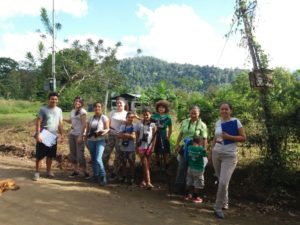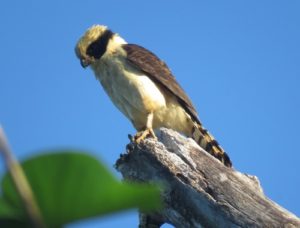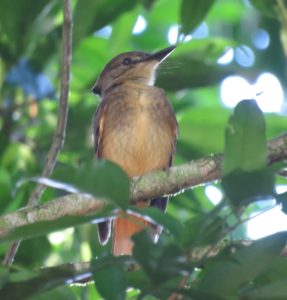We partner with rural communities in avian monitoring and native plants programs to create healthy landscapes for birds and track populations trends of priority species of conservation concern. This includes endemic, range restricted, threatened and endangered resident and Neotropical migratory species.
Our original initiative which began as a Caminos de Osa project in biological monitoring in the rural communities of Rancho Quemado and Dos Brazos in 2015 continues today stronger than ever. The community monitoring groups and their committees are not only conducting avian monitoring on a consistent basis using sound scientific methods and protocols, they programs are self-sustained. What that means is that they are selling trails guides produced in our first year of monitoring and bringing in groups of volunteers to support monitoring and other local projects, both of which provide important income that allows monitoring field work to take place over the long term.
Osa Birds has been in direct on-the-ground collaboration with SINAC-ACOSA and rural communities to:
- Reduce unsustainable land use practices and increase bird populations within the Osa Peninsula forest landscape
- Increase scientific knowledge on key indicator and priority species through building local individual and institutional capacity to inventory and monitor biodiversity
- Build local awareness and ownership of conservation activities through development of a collaborative community monitoring and ecotourism initiative
Our objectives have been completed and we are happy to say that Dos Brazos and Rancho Quemado are on their way to becoming model communittees in avian monitoring in Costa Rica. The community structures are in place and the managing bodies are active and functioning at a high and productive level!
To date, both Dos Brazos and Rancho Quemado have decided that supporting native plants in their respective communities is a priority to increasing wildlife populations, supporting healthier landscapes to both the people and local fauna that depend on them. As such, they are each designing a native plants nursery and community botanical garden. Both communities have already taken large steps towards creating local businesses to support tourism and local trails that people can enjoy for a long time to come.
Thank you to the US Fish and Wildlife Service Wildlife Without Borders Program, The CRUSA Foundation and SINAC-ACOSA for initial funding and support of this project!




